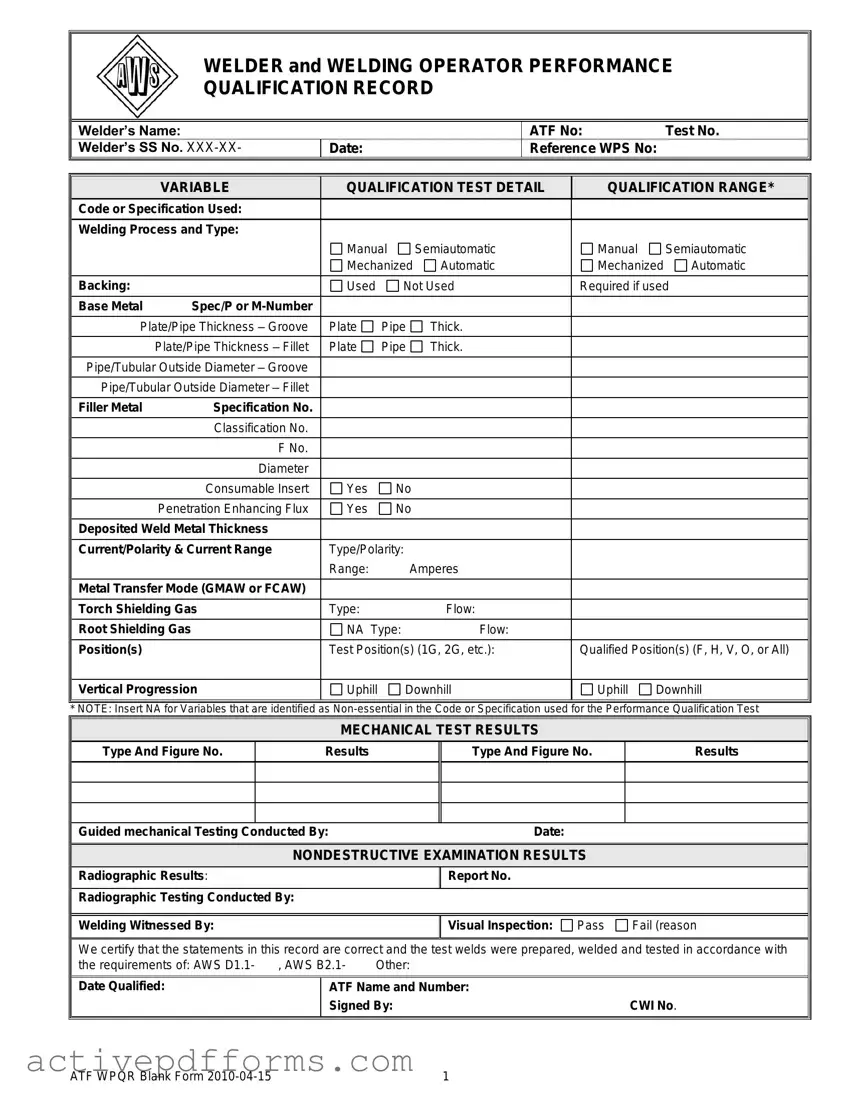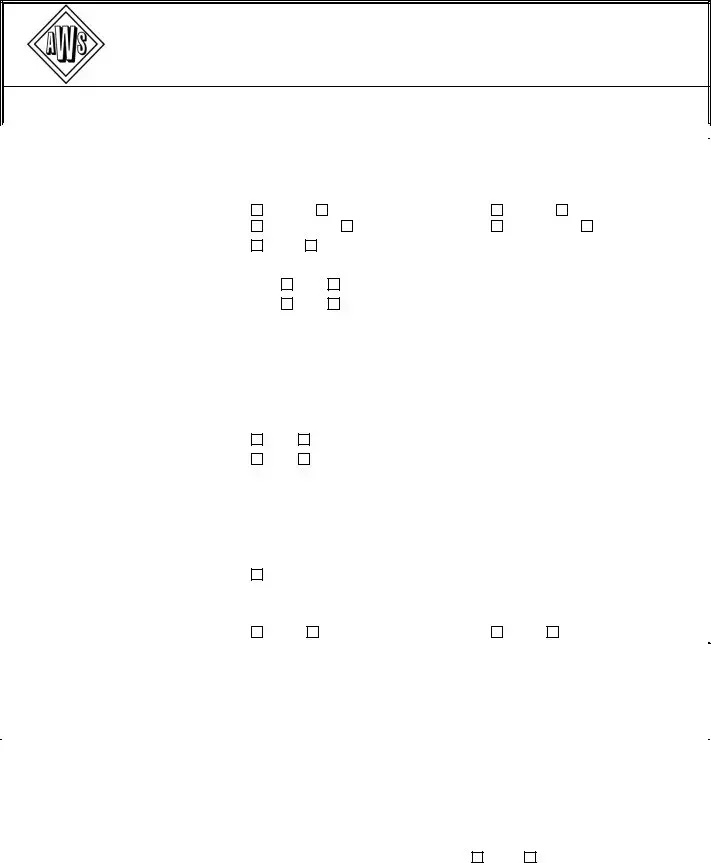Ensuring that welders meet industry standards is crucial for maintaining safety and quality in welding projects. The Welder Performance Qualification Record form serves as a comprehensive document that records a welder's ability to perform under specified conditions, following stringent guidelines set by regulatory bodies such as the American Welding Society (AWS). The form captures essential details about the welder, including their name, social security number, and the specific test number, alongside information regarding the welding process and type—ranging from manual to automatic techniques. Key aspects include the base metal specifications, thickness, diameter, and the use of backing, if any. It delves deeper into the intricacies of welding by noting the filler metal specifications, the use of consumable inserts or penetration enhancing flux, and the details of current and polarity used during the welding process. Additionally, the form outlines the test positions, the qualified positions, and the direction of welding, all of which are vital for evaluating a welder's competence. Beyond just the welding process, the form includes sections for both mechanical and nondestructive examination results, providing a holistic view of the welder's performance. Signatures from certified personnel attest to the validity of the conducted tests, making this document an indispensable tool for certifying the qualifications of welders in a highly standardized and regulated industry.

